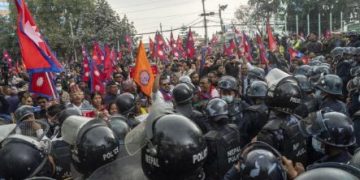Washington: NASA’s Opportunity rover’s science operations have been temporarily suspended as it waits out a growing dust storm on Mars, the US space agency said in a statement.
First detected by NASA June 1, the storm ballooned to more than 18 million square.km and included the Opportunity’s current location at Perseverance Valley in the Red Planet by June 8.
The swirling dust has raised the atmospheric opacity, or ‘tau’,- the veil of dust blowing around, which can blot out sunlight – in the valley in the past few days.
As the rover uses solar panels to provide power and to recharge its batteries, the rover was required to shift to minimal operations.
The storm’s atmospheric opacity is now much worse than a 2007 storm that Opportunity weathered. The previous storm had an opacity level, or tau, somewhere above 5.5; this new storm had an estimated tau of 10.8 as of morning June 10.
Despite the worsening dust storm, Opportunity also sent a transmission to NASA engineers on the same day, the report said.
Data from the transmission let engineers know the rover still has enough battery charge to communicate with ground controllers at NASA’s Jet Propulsion Laboratory in Pasadena, California.
However, still science operations remain suspended, the report said.
Opportunity’s team has also requested additional communications coverage from NASA’s Deep Space Network – a global system of antennas that talks to all the agency’s deep space probes.
The latest data transmission showed the rover’s temperature to be about minus 20 degrees Fahrenheit (minus 29 degrees Celsius).
Engineers will monitor the rover’s power levels closely in the week to come. The rover needs to balance low levels of charge in its battery with sub-freezing temperatures.
Its heaters are vitally important to keeping it alive, but also draw more power from the battery. Likewise, performing certain actions draws on battery power, but can actually expel energy and raise the rover’s temperature.
The rover has proved hardier than expected by lasting nearly 15 years, despite being designed for a 90-day mission.
Full dust storms though one are not surprising, but are infrequent. They can crop up suddenly but last weeks, even months.
During southern summer, sunlight warms dust particles, lifting them higher into the atmosphere and creating more wind.
Mars Reconnaissance Orbiter and two other NASA spacecraft orbiting the Red Planet –Odyssey and MAVEN — routinely support rovers on the ground.
Agentic AI
AI “agents” are coming, whether we are ready or not. While there is much uncertainty about when AI models will...
Read more






































